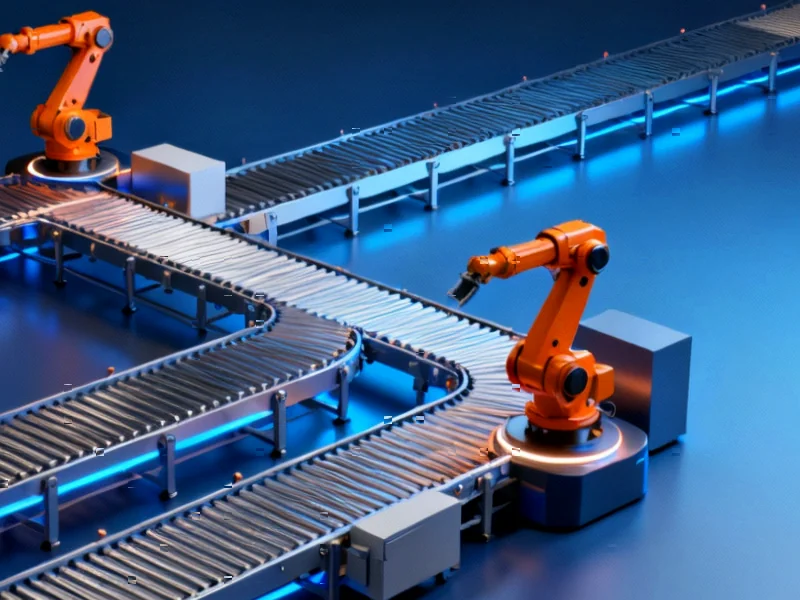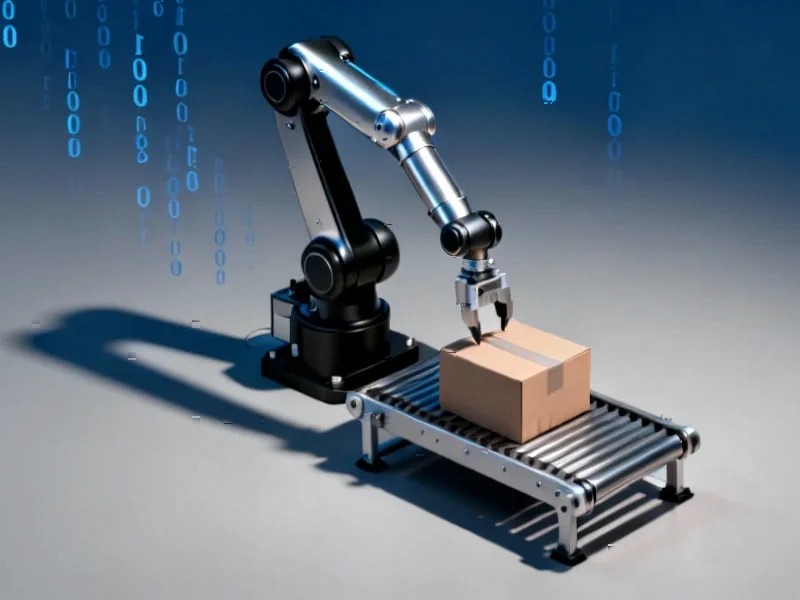The Strategic Shift Toward Automated Warehouses
Amazon is accelerating its transition to robotic automation in what could become one of the most significant operational transformations in modern logistics. According to internal strategy documents reviewed by The New York Times, the e-commerce giant plans to replace approximately 600,000 human positions with robotics systems over the coming years. This ambitious initiative aligns with Amazon’s broader goal of automating 75% of its warehouse operations, representing a fundamental restructuring of how the company manages its massive fulfillment network.
Table of Contents
The automation drive includes establishing approximately 40 next-generation robotics warehouses by the end of 2027, alongside comprehensive upgrades to existing fulfillment centers. This systematic approach to implementing advanced automation technologies suggests Amazon is moving beyond experimental phases into full-scale operational deployment of robotics systems., according to market analysis
Financial Implications and Analyst Projections
Morgan Stanley analyst Brian Nowak has quantified the potential financial impact of this automation strategy, estimating annual recurring savings between $2 billion and $4 billion by 2027. These projections are based on detailed analysis of Amazon’s current fulfillment costs and the efficiency improvements demonstrated by existing robotic installations.
Nowak maintains an overweight rating on Amazon stock with a $300 price target, suggesting potential upside of approximately 35%. His optimism persists despite Amazon’s relatively flat performance this year, which has positioned it as the laggard among the so-called “Magnificent Seven” tech stocks. The analyst’s confidence appears rooted in the long-term structural advantages that robotics automation could deliver., according to industry news
The Mechanics of Robotics-Driven Savings
The projected savings stem from fundamental changes to Amazon’s cost structure. Currently, the company spends approximately $3 to fulfill each customer order. Nowak’s analysis suggests robotics could reduce these costs by 20% to 40%, translating to savings of 60 cents to $1.20 per order. These efficiency gains would accumulate rapidly across Amazon’s enormous volume of transactions., as related article
During Amazon’s third-quarter earnings call, CEO Andy Jassy provided concrete evidence of these benefits, noting that the company’s most advanced robotic warehouse in Shreveport, Louisiana had reduced fulfillment costs by approximately 25%. Jassy also revealed that Amazon already deploys more than 1 million robots across its facilities, describing them as “improving cost efficiencies” while enhancing delivery speed and reducing customer costs.
Broader Strategic Implications
Morgan Stanley’s analysis suggests the market may be underestimating Amazon’s progress in generative AI and robotics integration within its retail operations. While near-term investor focus remains on Amazon Web Services growth, the long-term competitive advantages from automation could prove equally significant.
The Times report indicated even more substantial potential savings, with Amazon’s automation team estimating the company could avoid hiring more than 160,000 U.S. workers by 2027. This workforce reduction would translate to savings of roughly 30 cents on each shipped item, potentially generating approximately $10 billion in total savings according to Nowak’s calculations.
Key Automation Milestones:
- Deployment of 40 next-generation robotics warehouses by 2027
- Automation of 75% of warehouse operations
- Integration of over 1 million robots currently in operation
- Potential avoidance of 160,000 additional hires through automation
Industry Context and Future Outlook
While Morgan Stanley’s projections are substantial, they might actually represent the conservative end of Amazon’s potential savings. Nowak acknowledged that next-generation robotics warehouses might only handle 10%-20% of units by 2027, suggesting even greater efficiency gains could emerge as automation technology matures and deployment scales.
The transition toward automated logistics represents a strategic pivot that could redefine operational efficiency standards across the e-commerce industry. As Amazon continues to refine its robotics systems and integrate them more deeply into its fulfillment network, the company appears positioned to establish new benchmarks for cost management and operational performance in retail logistics.
This automation initiative coincides with Amazon’s broader investments in artificial intelligence and machine learning, suggesting the company is building an integrated technological ecosystem rather than simply deploying standalone robotics solutions. The convergence of these technologies could create synergistic effects that amplify the efficiency gains beyond current projections.
Related Articles You May Find Interesting
- Texas Instruments Faces Market Skepticism Amid Earnings and Guidance Shortfall:
- Windows 10’s Demise Fuels Linux Migration: Why Zorin OS Is Leading the Charge
- Legal Showdown Erupts as Reddit Battles AI Giants Over Data Theft Allegations
- Beyond the Blackout: Unpacking AWS’s Cascading Infrastructure Failure and Its In
- Samsung’s HBM4 Breakthrough Sets Stage for High-Stakes Memory Market Battle
This article aggregates information from publicly available sources. All trademarks and copyrights belong to their respective owners.
Note: Featured image is for illustrative purposes only and does not represent any specific product, service, or entity mentioned in this article.



